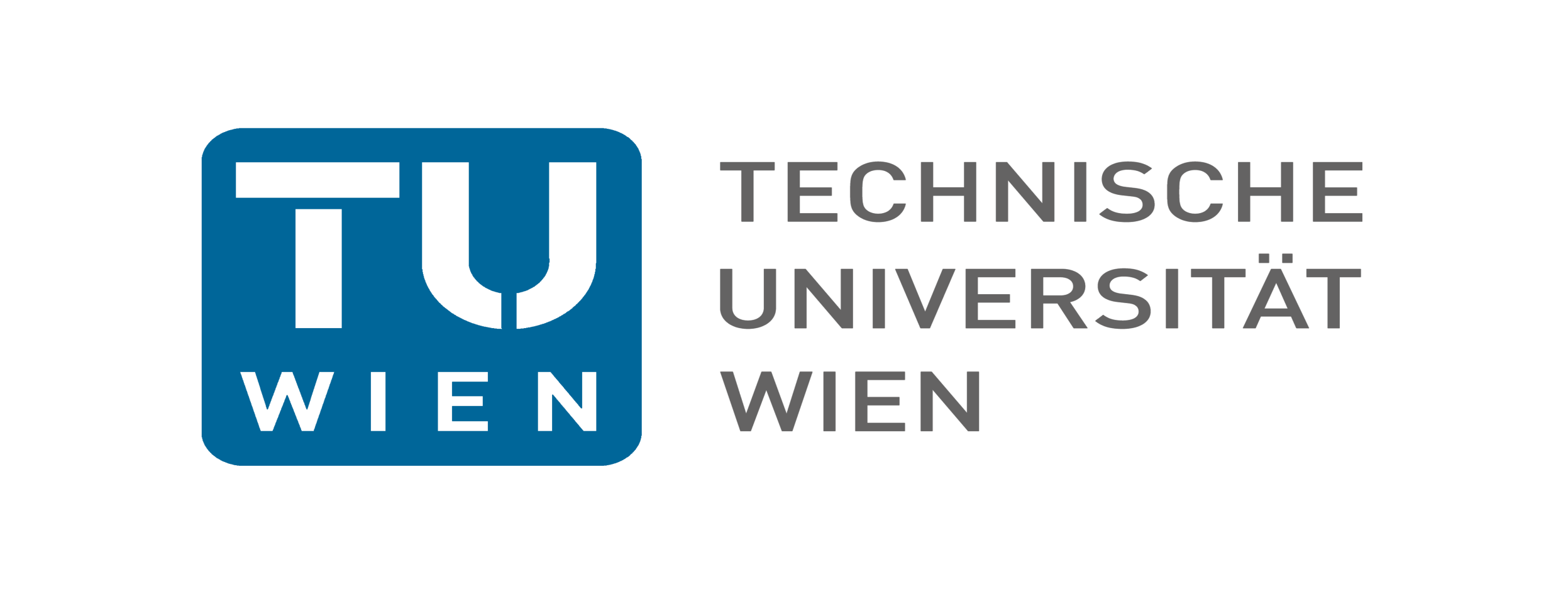Joint Theory Seminar
Tuesday 14:00-15:00
WS2022
Schedule
back| Date | Location | Title | Speaker | Abstract |
|---|---|---|---|---|
| 11.10.2022 | TU | Internal Levin-Wen models | Vincentas Mulevicius | In this talk we will discuss (2+1)-dimensional topological phases of matter. In particular we will recall how they arise as degenerate ground states of lattice systems having a gapped Hamiltonian. Examples of this are the Kitaev toric code, based on a lattice of spin-1/2 particles, as well as its generalisations - the Kitaev lattice model based on Hopf algebras, and the Levin-Wen model based on fusion categories. The focus of this talk is going to be a construction allowing one to engineer a new topological order out of anyonic excitations of a given one. This construction is an analogue of the aforementioned lattice models and is best described using a universal language of topologcial quantum field theories with defects, which we will also recall. |
| 18.10.2022 | UV | Flat Space Holography in 3D | Max Riegler | The holographic principle provides a very powerful relation between quantum field theories and theories of quantum gravity. While its most famous avatar, the anti-de Sitter/conformal field theory (AdS/CFT) correspondence, has been extensively studied during the past 25 years, extensions of holography to quantum gravity in de-Sitter or flat space are still under active development. In this talk, I will introduce the main ideas and concepts used to establish holography for asymptotically flat spacetimes in three spacetime dimensions. A particular focus will be on the basic concepts of the dual Bondi-Metzner-van der Burg-Sachs invariant quantum field theories (possibly with additional u(1) charges) and how to set up a holographic dictionary involving these quantum field theories and asymptotically flat spacetimes. |
| 25.10.2022 | UV | Massive Higher-Spin Fields in Three-Dimensional Asymptotically Flat Spacetimes | Michel Pannier | Three-dimensional gravity is often employed as a toy model for applications in the context of the Holographic Principle. The purely topological nature of this theory, however, may render it too simple to reveal insights into the working mechanisms of Holography and, thus, one may introduce extra degrees of freedom, for example via the coupling to a scalar or higher-spin field. In this talk I will present a simple way to describe the propagation of massive scalar and higher-spin fields on a fixed asymptotically flat spacetime in 3D, thereby providing a mechanism that effectively unfolds the equations of Fierz and Pauli. I will also discuss a suitable higher-spin generalisation of flat-space boundary conditions. |
| 8.11.2022 | TU | String integrability of defect CFT and dynamical reflection matrices | Georgios Linardopoulos | The D3-D5 and D2-D4 probe-brane systems with nonzero worldvolume flux are holographically dual to N=4 super Yang-Mills and ABJM theory in the presence of half-BPS domain walls. The two domain wall systems are thought to be integrable; the evidence comes mainly from the study of correlation functions at weak coupling. In the present talk we show that the string theory duals of these systems are classically integrable. In other words, the string boundary conditions on the probe branes preserve the integrability of the corresponding Green-Schwarz sigma models. This finding suggests that the dual domain wall systems are integrable to all loop orders and for any value of the bond dimension. |
| 22.11.2022 | Online | Uniqueness of supersymmetric AdS5 black holes | Sergei Ovchinnikov | The classification of anti de Sitter black holes is an open problem of central importance in holography. In this talk, I will present new advances in classification of supersymmetric solutions to five-dimensional minimal gauged supergravity. In particular, we prove a black hole uniqueness theorem within a ‘Calabi-type’ subclass of solutions with biaxial symmetry. This subclass includes all currently known black hole solutions within this theory. |
| 29.11.2022 | Online | Hidden symmetries in cosmology and black holes | Francesco Sartini | Cosmological models and black holes belong to classes of space-time metrics defined in terms of a finite number of degrees of freedom, for which the Einstein–Hilbert action reduces to a one-dimensional mechanical model. We investigate their classical symmetries and the algebra of the corresponding Noether charges. These dynamical symmetries have a geometric interpretation, not in terms of spacetime geometry, but in terms of motion on the field space. Moreover, they interplay with the fiducial scales, introduced to regulate the homogenous model, suggesting a relationship with the boundary symmetries of the full theory. Finally, the existence of these symmetries unravels new aspects of the physics of black holes and cosmology. It opens the way towards a rigorous group quantization of the reduced models, to the study of their holographic properties. It might have significant consequences on the propagation of test fields and the corresponding perturbation theory. |
| 6.12.2022 | UV | Discrete fluxes, higher-form symmetries and Ward identities | Siye Wu | We study discrete electric and magnetic fluxes in gauge theories from algebraic and topological viewpoints. We explain that they can not be simultaneously specified in a sector of quantum Hilbert space. This is the uncertainty of fluxes discovered previously in Abelian gauge theories. We further interpret the discrete fluxes as charges of higher-form symmetries, which leads to an enhanced understanding of the latter in terms of cohomology groups of spacetime with coefficients in a group. More generally, higher-form symmetries exist whenever there are constant gauge transformations. Finally, we explore the relations to Noether’s second theorem and higher Ward identities. |
| 13.12.2022 | UV | Distracted by Science-Fiction: The Physics of Reverse-Engineered Metrics | Sebastian Schuster | Reverse-engineered metrics are ad-hoc metrics; instead of using the Einstein equation to solve for a metric given a stress-energy tensor as input, the metric is the input and the stress-energy tensor the output. Much of the attention is taken up by metrics inspired by science fiction: Wormholes, warp drives, tractor beams. Historically, however, this was not the case, as both the Gödel universe and regular black holes are similarly reverse-engineered. The goal of this talk will be to demonstrate how the mathematical simplicity (differentiation instead of integration) is gained through physical difficulty. Usually, this is reduced to a question of physicality. Worse, this question is then in turn answered in an oversimplified way by invoking (point-wise) energy conditions. I will demonstrate why energy condition cannot easily separate the physical wheat from the metric chaff, and how the question of physicality itself is much more nuanced, model-dependent, and multiform. In addition, I will make the case that reverse-engineered metrics can also serve as valuable toy models for a host of other physics questions—just as they begun their journey at the hands of Gödel. | 10.1.2023 | UV | The anti-Unruh effect in black hole spacetimes | Aindriú Conroy | There is no well-defined notion of a particle in quantum field theory in curved spacetime due to the lack of global symmetries. The standard procedure in quantum field theory is to treat fields rather than particles as the fundamental object of interest. Nevertheless, in a seminal 1976 paper by W. G. Unruh, an operational meaning was given to the particle concept by examining the absorption and emission of field quanta by a two-level atom. This is the so-called Unruh-DeWitt detector and, in this operational sense, we say a particle is what a particle detector detects! Computing the response of an Unruh-DeWitt detector in black hole spacetimes is technically challenging – a fact which has largely limited the literature to stationary detectors. In this talk, we consider the response of an Unruh-DeWitt detector near an extremal charged black hole, modelling the near-horizon region of this extremal spacetime by the Bertotti-Robinson spacetime. The advantage of employing the Bertotti-Robinson limit is that the two-point functions for a massless scalar field are obtainable in closed form for a number of quantum states of interest, allowing us to explore the full gamut of the parameter space for a broader range of stationary and non-stationary trajectories than is typically possible. Particular attention will be paid to the thermalization of the detector as we look for evidence of the proposed anti-Unruh and anti-Hawking effects. | 17.1.2023 | TU | Anomalous and axial Z' contributions to g-2 | Pascal Anastasopoulos | In this talk, we will study the effects of an anomalous Z' boson on the anomalous magnetic moment of the muon (g-2), and especially the impact of its axial coupling. We mainly evaluate the negative contribution to (g-2) of such couplings at one-loop and look at the anomalous couplings generated at two loops. We find areas of the parameter space, where the anomalous contribution becomes comparable and even dominant compared to the one-loop contribution. We show that in such cases, the cutoff of the theory is sufficiently low, so that new charged fermions can be found in the next round of collider experiments. | 24.1.2023 | UV | Elements of Celestial Conformal Field Theory | Stephan Stieberger | I will introduce into subject of holographic description of four-dimensional massless physics as conformal field theory on the celestial sphere and report on progress on celestial conformal field theory (CCFT). In celestial holography, four-dimensional scattering amplitudes are considered as two-dimensional conformal correlators of a putative two-dimensional CCFT. The simplest way of converting momentum space amplitudes into CCFT correlators is by taking their Mellin transforms with respect to light-cone energies. For massless particles, like gluons, however, such a construction leads to three-point and four-point correlators that vanish everywhere except for a measure zero hypersurface of celestial coordinates. This is due to the four-dimensional momentum conservation law that constrains the insertion points of the operators associated with massless particles. These correlators are reminiscent of Coulomb gas correlators that, in the absence of background charges, vanish due to charge conservation. We supply the background momentum by coupling Yang-Mills theory to a background dilaton field, with the (complex) dilaton source localized on the celestial sphere. We show that the celestial Yang-Mills amplitudes evaluated in the presence of a spherical dilaton shockwave are given by the correlation functions of primary field operators factorized into the holomorphic current operators times the "light" Liouville operators. They are evaluated in the semiclassical limit of Liouville theory (the limit of infinite central charge) and are determined by the classical Liouville field describing metrics on the celestial sphere. |
About
back

The Joint Theory Seminar is held alternately at the University of Vienna and the Technische Universität Wien, either on site or online via Zoom.
The Topic of the seminar is recent theoretical research in the areas of mathematical physics, high energy physics, physics of fundamental interactions and particle physics.
The target audience for the talks are PhDs, postdocs and faculty members.
To stay informed please subscribe to our mailing list.
How to participate
Attending
Anyone can attend. To receive the link to the Zoom meeting please contact one of the organizers.
Giving a talk
Contact
backDaniel Grumiller
Associate Prof. Dr.techn.
Black holes and holography
Technische Universität Wien
Stefan Fredenhagen
Univ.-Prof. Dr.
Mathematical physics
University of Vienna
Romain Ruzziconi
Postdoctoral researcher
Black holes and holography
Technische Universität Wien
Emmanuele Battista
Postdoctoral researcher
Mathematical physics
University of Vienna